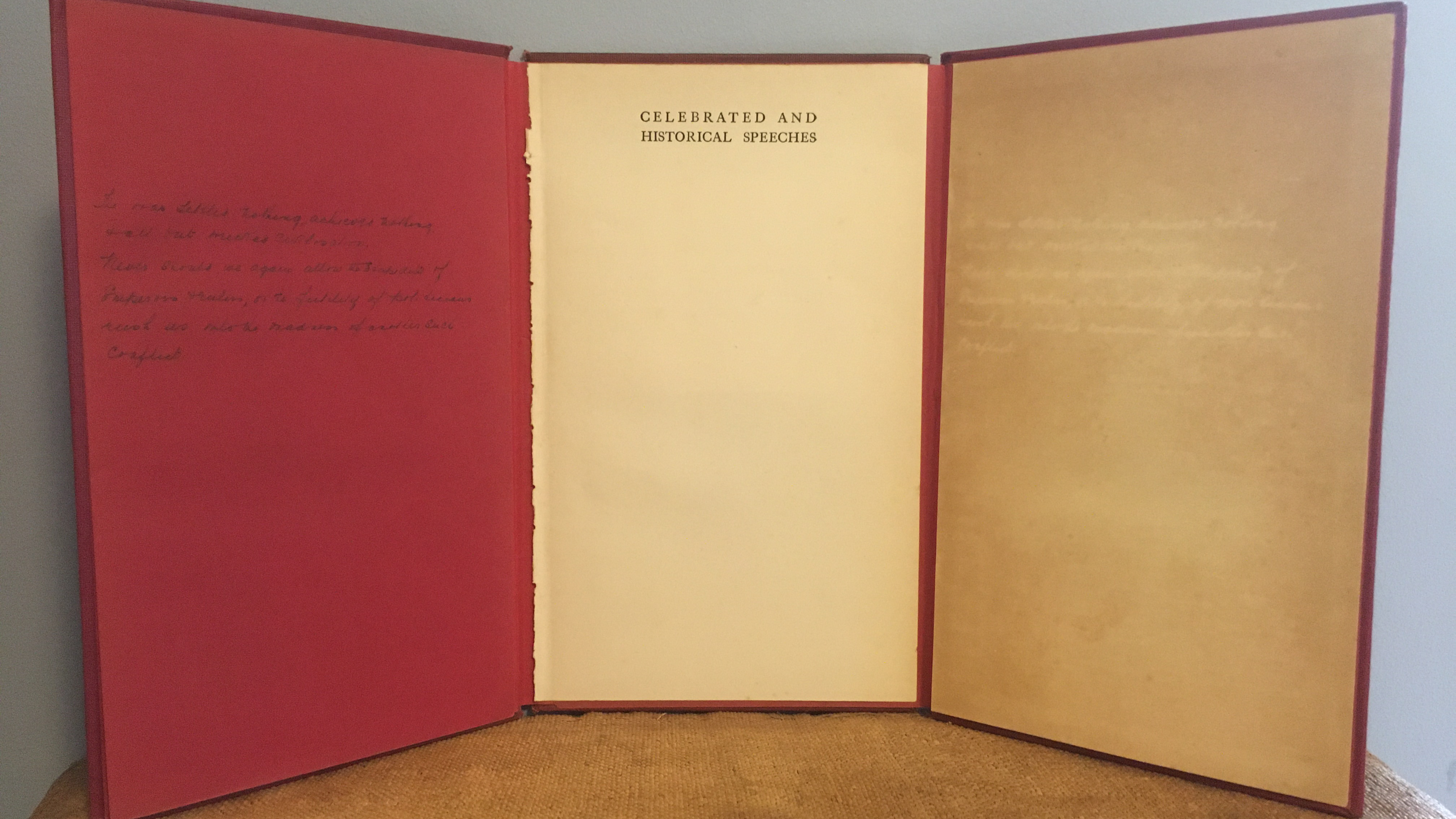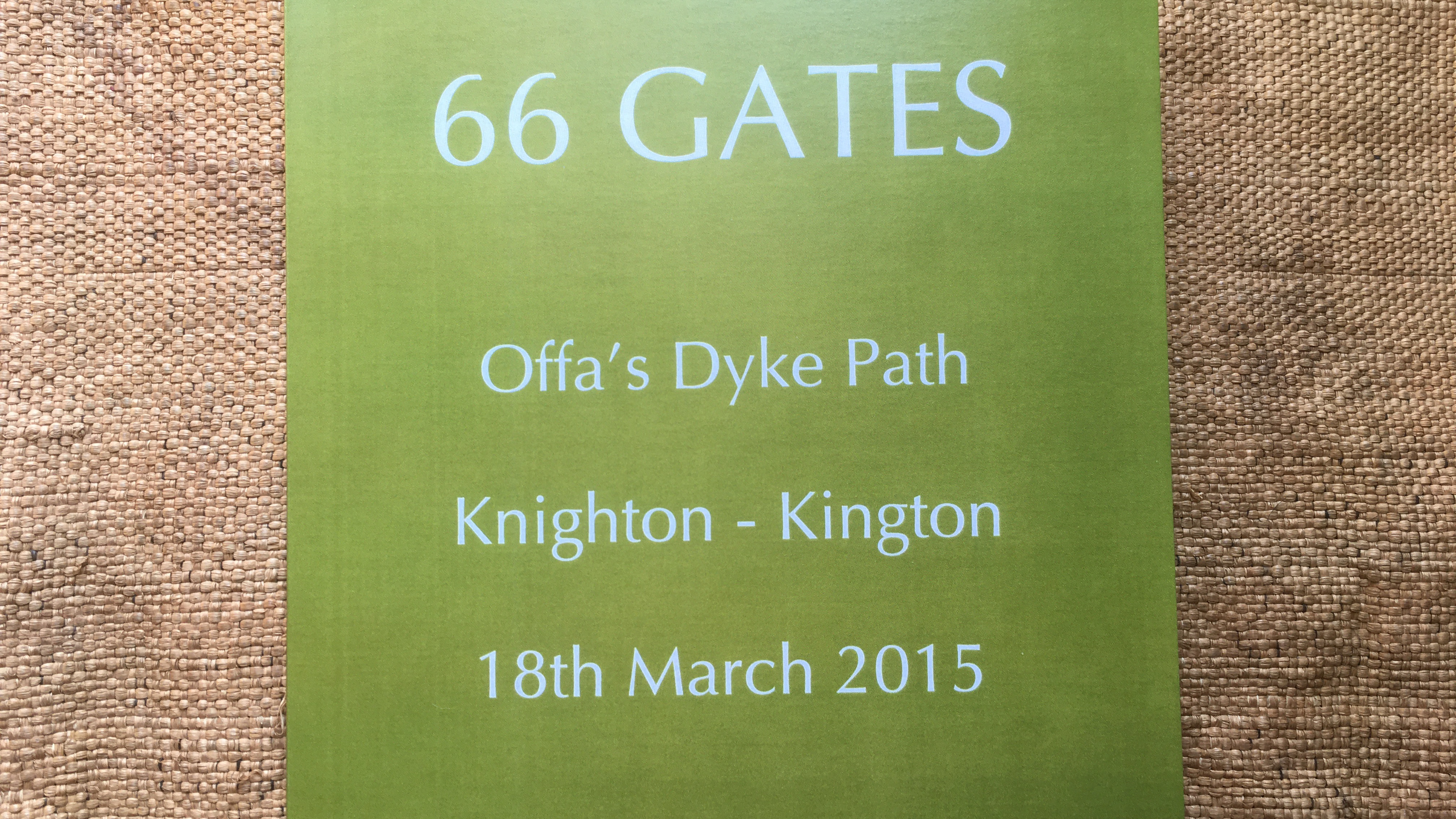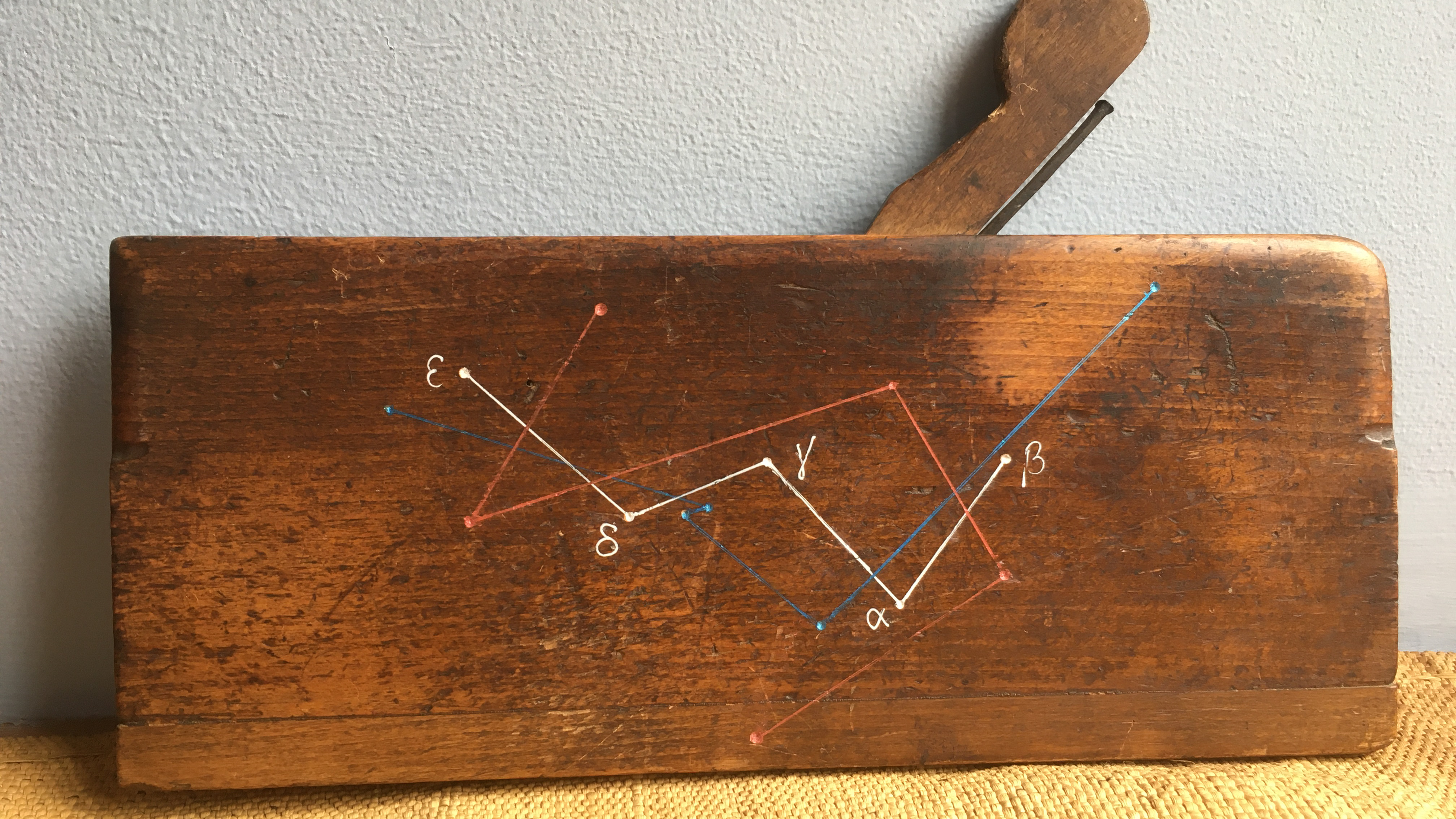


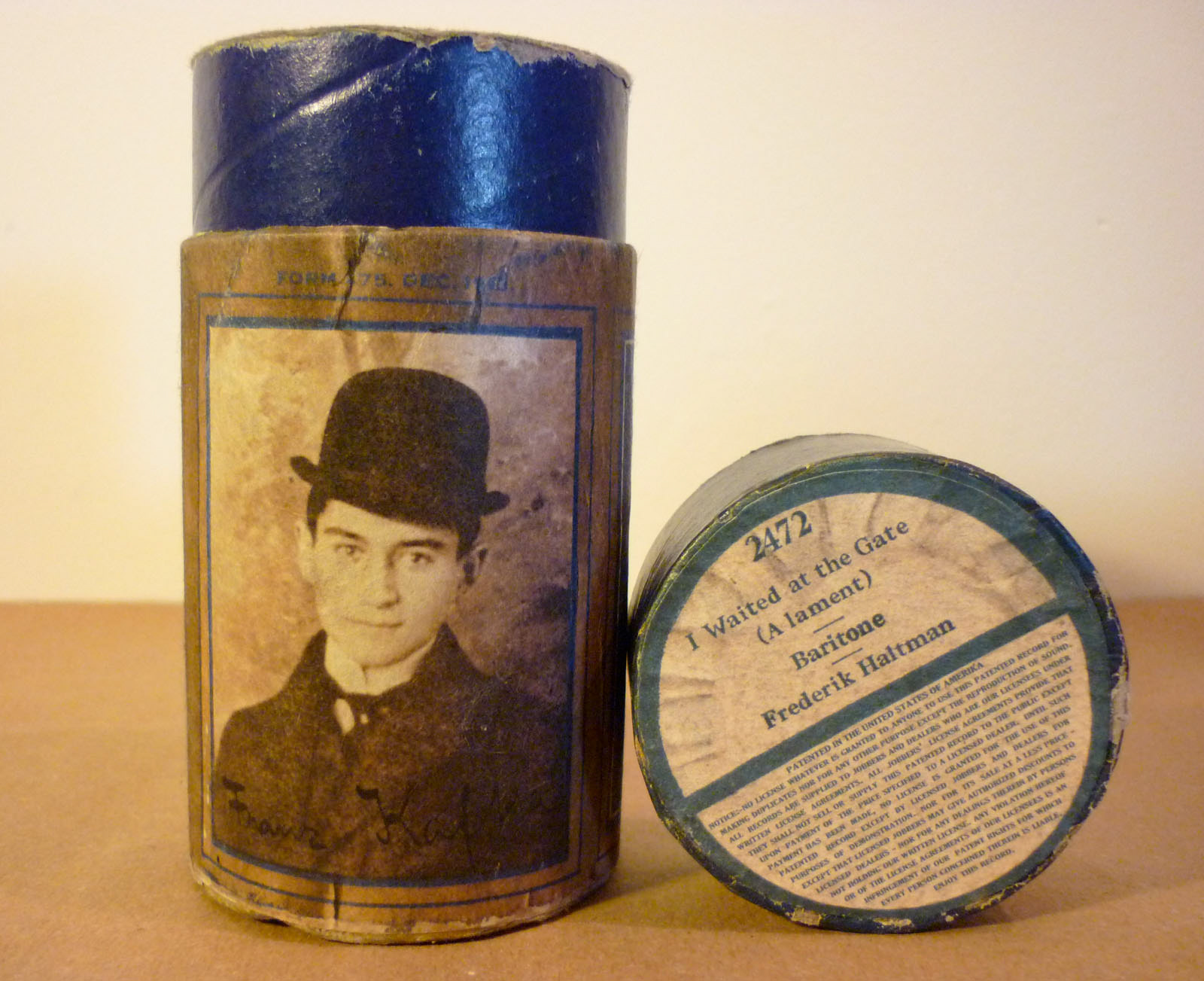


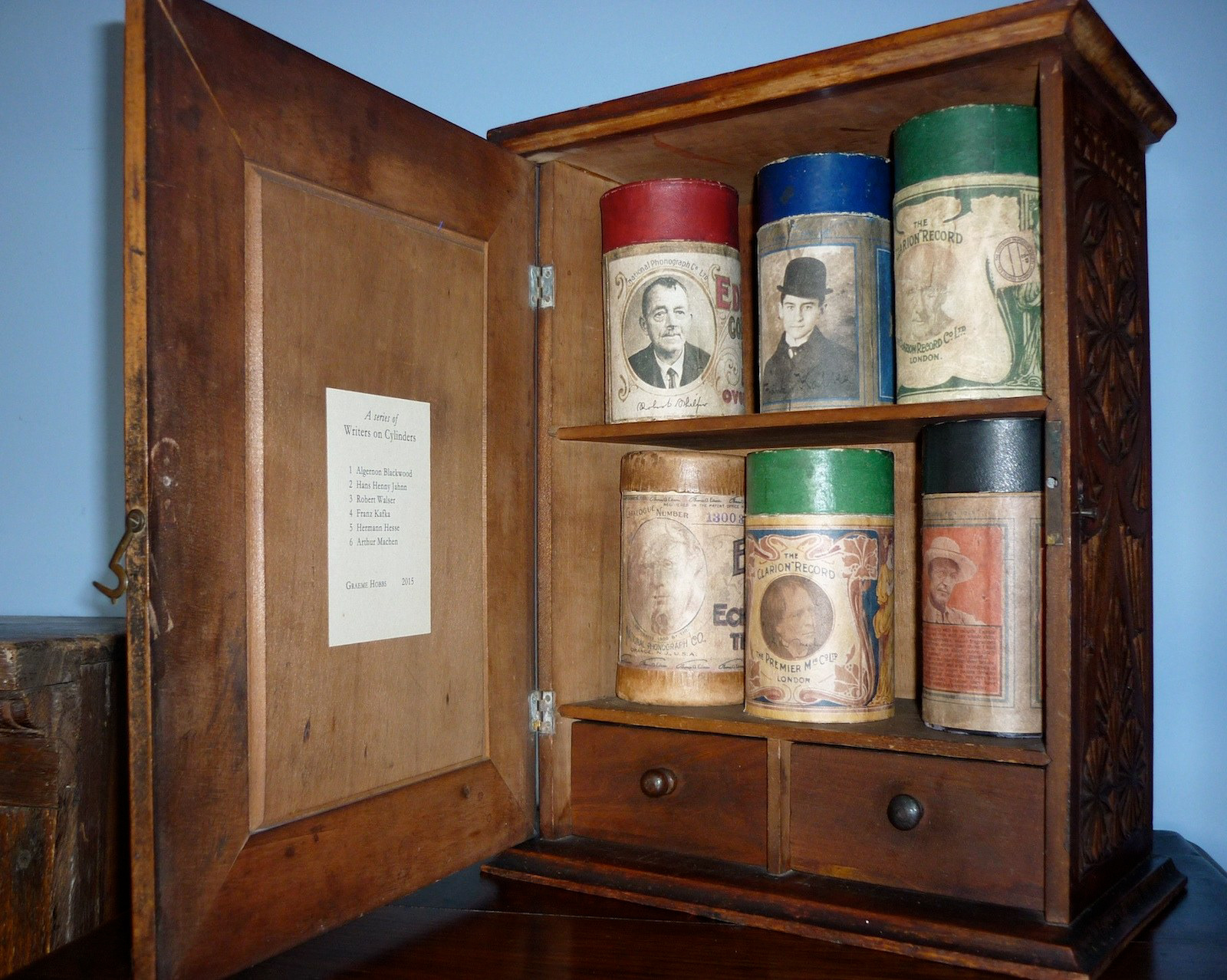
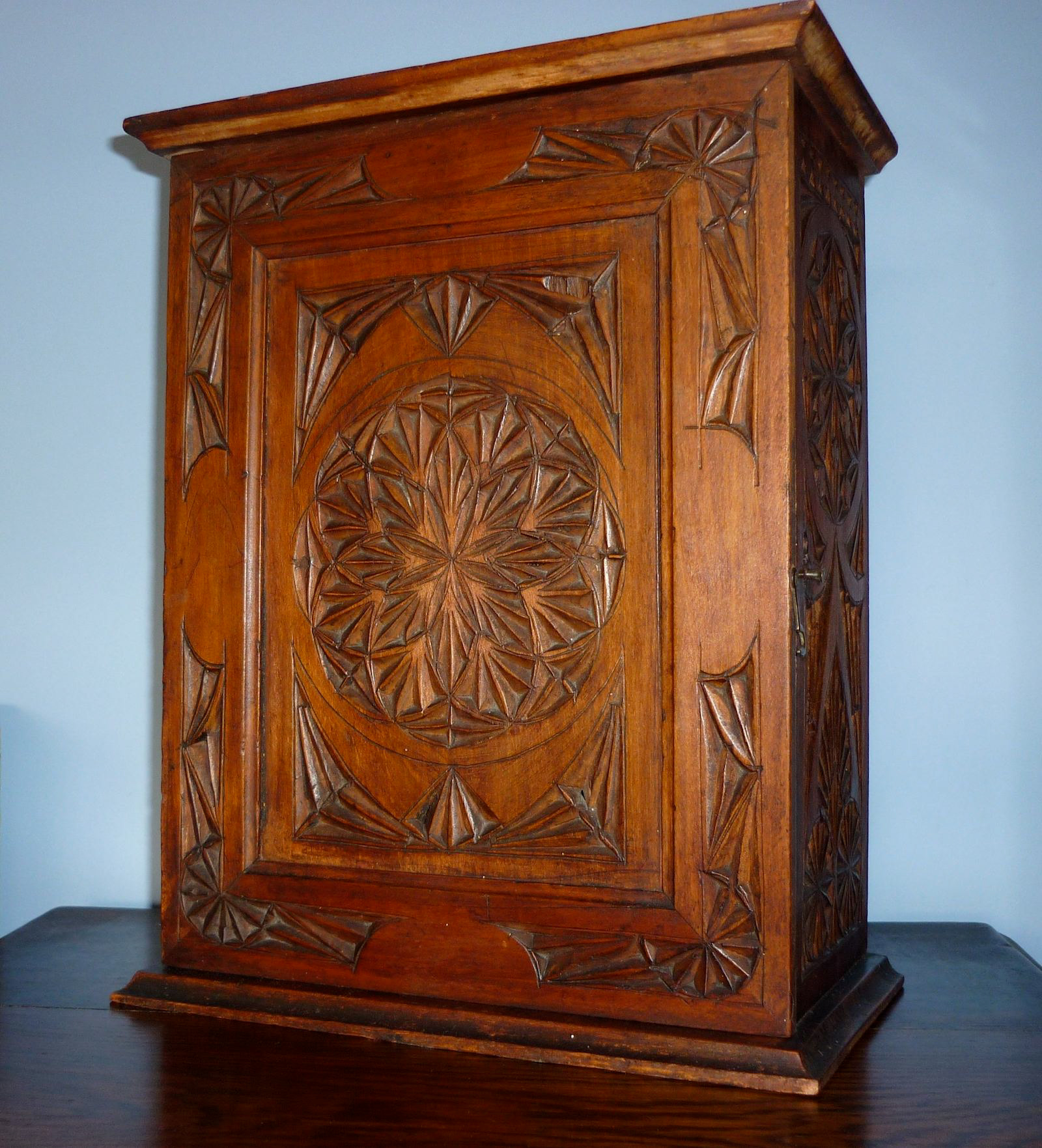
The expiry of phonograph patents in 1902 led to a golden era of piracy in wax cylinders; indeed it was the finding of a cylinder with the label of a pirate company glued over the top of the legitimate company’s label that gave me the idea that phonograph cylinder labels would be a worthwhile medium in which to pay homage to various writers, altering the labels’ contents to reflect their particularities. The writers chosen are Algernon Blackwood, Hans Henny Jahnn, Robert Walser, Franz Kafka, Herman Hesse and Arthur Machen.
Algernon Blackwood Blackwood (1869-1951) is a rather overlooked writer these days, whose real subject – despite numerous lurid book jackets trying to persuade us otherwise – is wonder; dreadful wonder at times maybe, but wonder nevertheless, most often of that magical childlike quality that makes the unlikeliest of connections between things which adults then seek to reason away. But the children know best. The Blackwood cylinder uses elements from his books The Education of Uncle Paul (1909), The Human Chord (1910) and The Promise of Air (1918). The song title – ‘Between Yesterday and To-morrow’ – is credited to ‘Nixie's Woodwinds’ (Nixie’s vision in The Education of Uncle Paul of the dawning and unfurling of the winds is still extraordinary), and – with a nod towards The Promise of Air, Blackwood's fantasy of a man who feels trapped in his human body and suburban surroundings and wants to live his life with the freedom of a bird – the cylinder is filled with feather down. The top cylinder label actually had the word ‘Camplife’ written on it by someone in the past; Blackwood was a great outdoors man, and reading about his experiences in the Canadian wilderness among other places, it seemed an eminently fitting word to leave in place.
Hans Henny Jahnn The second in the series commemorates the idiosyncratic German writer, farmer and church organ restorer Hans Henny Jahnn (1894-1959), whose intense, pungent prose deals in death, decay, eroticism, horror, guilt and degradation (amongst other things). He also idolised horses. His most famous work is his dark, fantastical 1962 novella, The Night of Lead, near the beginning of which a character’s prophecy – ‘we walk the streets until our love turns bad’ – turns out to be all too true. Referencing the ending, the cylinder is lead lined and contains a snuffed-out stub of candle, whose wax has seeped through the packaging. As you might imagine, the word ‘sacred’ on the top label – left on from the original – is ironic.
Robert Walser The exquisitely tortuous playfulness of the Swiss writer Robert Walser (1878-1956) is unmatched (Susan Sontag made a nice comparison, calling him ‘a Paul Klee in prose’). For all of the loneliness and doubt behind his words, their presiding characteristic is good humour and one rarely leaves it not feeling at least a little uplifted. Rambling is a consistent theme in Walser’s writing (I’ve given him a song title of ‘How splendid to wander in the bright summer air!’ – ‘vocal; unaccompanied’ of course). His sentences also resemble the act: characteristically they find him striding out, stumbling a little perhaps but then finding something fascinating by the wayside to take his attention; mixing extraordinary expostulation with simple-hearted delight and tremulous uncertainty, he doubles back, heads forward again, turns round and admires the view, exclaims ‘how delightful all this is!’ – and then ends with a question mark that puts the whole into doubt. There is no-one quite like him. A writer once all but forgotten, his reputation and influence have grown steadily and he is now regarded as one of the key voices in 20th century modernism, hence the cylinder is filled with the silks of rosebay willowherb, which drift through the summer air to spread and seed where they will. I have used the final words from Walser's sketch, A Little Ramble (1914), on the bottom of the phonograph: ‘We don't need to see anything out of the ordinary. We already see so much.’
Franz Kafka The original top label for this cylinder dedicated to Franz Kafka (1883-1924) featured the artist Fred Heltmann, who has here become ‘Fred Haltmann’ – the perfect person to sing ‘I Waited at the Gate (A Lament)’, which sounds just about right for the writer of Before the Law. The 186 words of licensing legalese written on the top of the original label – from ‘No license whatever is granted to anyone to use this patented record for making duplicates nor for any other purpose except the reproduction of sound upon an Edison phonograph by means of an Edison reproducer’ to ‘any violation hereof or of the license agreements of our licensees is an infringement of our patent rights for which every person concerned therein is liable’ – are astonishing in that they take up fully half of the label but are still printed so small that they are illegible without magnification. With a nod towards the travails of Kafka’s various characters trapped in impossible bureaucratic neverlands, I’ve changed the wording around to make it both slightly less comprehensible and slightly more nonsensical than it is already. I have however made it a little more legible. The cylinder contains a handwritten facsimile of Kafka's manuscript of his late parable, Ein Komentar (1922), published posthumously by Max Brod as Gib's auf! (Give It Up!). As to be expected for a writer who was born into a German-speaking Jewish family in Prague, there are contesting claims to ownership of Kafka and his writing these days, but his writing sidesteps them all. Consequently I have cut the facsimile into strips from which there is no hope of reconstituting the original, dividing the pieces among the cylinders in the edition. The original phonograph type was ‘Edison Blue Amberol Record’, whose title I have changed to ‘The New “Paterfamilias” Record’ which seems fitting. Kafka had one or two problems with his father in his lifetime, but he is the daddy now.
Herman Hesse This cylinder pays homage to the German-speaking Swiss poet, novelist, and painter, Hermann Hesse (1877-1962). The main lettering on the cylinder has been transformed from ‘Edison Blue Amberol Record’ to ‘Amberol Pure-Tone Record’, a nod towards Hesse's key essay written in 1914, after the outbreak of the First World War, O Freunde, nicht diese Töne!, in which he decried the lurch to nationalism and called for people to remember their common European heritage. Other works referenced on the cylinder include – appalling pun alert – Siddhartha (1922), Steppenwolf (1927) and Wandering (1920), with a passage from that beautiful collection’s Mountain Pass (‘But I smile, and not only with my mouth. I smile with my soul, with my eyes, with my whole skin, and I offer these countrysides, whose fragrances drift up to me, different senses than those I had before, more delicate, more silent, more finely honed, better practised, and more grateful…’) printed on the side. As with all of the cylinders, this one contains something appropriate to the writer inside, in this case dried marigolds. As an important plant of offering, festivities and worship in both western and eastern religions, they seemed the perfect plant to pay homage to a writer who sought and promoted spiritual truth and understanding through his words.
Arthur Machen This sixth and last cylinder pays homage to the Welsh writer Arthur Machen (1863-1947). Born in Caerleon in Gwent, but living and working for the bulk of his creative life in London, Machen was a writer of the borderlands, the literal ones of the Welsh Marches to which he returned time and again in his fiction but also the liminal worlds of the uncanny as they manifest in the everyday. His was an ability, as Iain Sinclair puts it in his 2103 essay, Our Unknown Everywhere, ‘to recognise holy hills behind a sprawl of suburbs’. Not only holy hills but troubling strangeness too, with his works conjuring up half-hidden worlds of pungent darkness. The cylinder required a similar treatment, hence it is lined with an old dark pelt of uncertain provenance. Works referenced include The Great God Pan (1894), A Fragment of Life (1906) and The London Adventure (1924).
Cabinet What was once a spice cabinet is now the housing for all six of the cylinders. The bottom drawers of the cabinet are filled with fireweed silks and dried marigolds respectively, their contents the same as those found in the cylinders for Robert Walser and Hermann Hesse. There is also another cabinet I have made to house all six cylinders, reconstituted from an old oak writing slope, now repaired, shelved and felt-lined.
